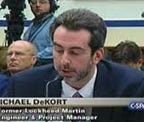Congratulations
I would like to suggest that if you are using public shadow driving for most AI, engineering and testing that you consider aerospace simulation. This is not a solicitation. I am simply trying to use my experience to make people aware of the issues and resolution.
Autonomous Levels 3, 4 and 5 will never be reached without Simulation vs Public Shadow Driving for AI
Public Shadow Driving is Dangerous. Thousands of accidents, injuries and casualties will occur when these companies move from benign and easy scenarios to complex, dangerous and accident scenarios. And the cost in time and funding is untenable. One trillion public shadow driving miles would need to be driven at a cost of over $300B.
Issues with Public Shadow Driving AI
1. Miles and Cost — One Trillion Miles and $300B
a. Toyota and RAND have stated that in order to get to levels 4 and 5 one trillion miles will have to be driven. This to accommodate the uncontrollable nature of driving in the real world, literally stumbling and then having to restumble on scenarios to train the AI. To accomplish this in 10 years it will cost over $300B. That extremely conservative figure is the cost of 684k drivers, driving 228k vehicles 24/7. This expense in time and money is per company and vehicle.
2. Injuries/Casualties of Public Shadow Driving
a. Data from NASA, Clemson University, Waymo, Chris Urmson (Aurora) and the UK have shown situation awareness and reaction times are very poor. Between 17 and 24 seconds are needed to properly acclimate and react. This delay results in drivers not being able to function properly especially in critical scenarios. They often make the wrong decision or over react. Many including Waymo, Volvo, Ford and Chris Urmson (Aurora) have called for L3 to be skipped due to these issues. The fact of the matter is if L3 is dangerous then so is using public shadow driving for L4 and L5.
3. Injuries and Casualties caused in Complex, Dangerous and Accident Scenarios
a. In order for AI to learn how to handle complex, dangerous and actual accident scenarios it has to run them over and over. And they have to precisely match, or closely match, the original scenario. To date this is not being done. Which is why there have not been a lot of accidents, injuries or casualties. When that time comes the shadow drivers will have to drive and redrive scenarios that include progressively higher levels of complexity, involving many other vehicles or entities, bad weather, bad roads conditions, system errors etc. Many of those scenarios will be known accident scenarios. To learn these situations it will literally mean billions of miles have to be driven and possibly millions of iterations of these scenarios run to get this data. That will result in accidents, injuries and even casualties in the majority of these cases.
b. To date there have been no children or families harmed by using this process. (There have however been injuries and casualties involving drivers). That is largely because only benign scenarios are being run. The public shadow driving be utilized now occurs on well-marked, well lit, low complexity, well mapped and good environmental conditions. Given every company bringing this technology to market would have to drive that trillion miles and learn from progressively more dangerous scenarios, casualties are inevitable. I suggest that when this is known or that first mass tragedy or death of a child has occurred the public, litigators and governments will react strongly. That will halt progress for a very long time. Far more than self-realization and policing would.
4. AI — Machine Learning — Neural Networks have Inherent Flaws.
a. MIT has stated that these processes miss corner or edge cases. Which result in spontaneous and unexpected errors. And the engineers using the practice do not entirely know how it works.
If you look at these areas individually, let alone in combination, you can see for legal, morale, ethical and financial reasons public shadow driving is untenable.
As for simulation being the solution. I believe the answer is to create an international Simulation Trade Study/Exhibit and Association. The purpose being to:
1. Make the industry aware of what simulation can do. Especially in other industries such as aerospace. (Where the FAA has had detailed testing to assess simulation and simulator fidelity levels for decades.)
2. Make the industry aware of the MCity approach to finding the most efficient set of scenarios. Bring that one trillion miles down by 99.9%
3. Make the industry aware of who all the simulation and simulator organizations are.
4. Evaluate the available products to determine their current capabilities.
5. Determine how close the industry and any individual product is to filling all the capabilities required to eliminate public shadow driving. Where there are gaps determine a way forward to improving products or possibly creating a consortium. This may involve utilizing expertise from other industries.
We clearly face a challenge here. But one we have recently seen improving. Several simulation companies have signed on to the approach so far and SAE, who is in agreement on the issues and resolutions, is assisting by helping us connect to key industry players.
For much more detail on this as well as references for what we have stated please see the links for several articles I have written on the subject below. I would like very much to discuss this with you further.
Due Diligence Recommendations for the Mobile, Autonomous and Driverless Industry
https://www.linkedin.com/pulse/due-diligence-recommendations-mobile-autonomous-industry-dekort
Stop relying on AI to make Autonomous Vehicles — You are wasting time and risking lives
https://www.linkedin.com/pulse/stop-relying-ai-make-autonomous-vehicles-you-wasting-michael-dekort
Who will get to Autonomous Level 5 First and Why.
https://www.linkedin.com/pulse/who-get-autonomous-level-5-first-why-michael-dekort
